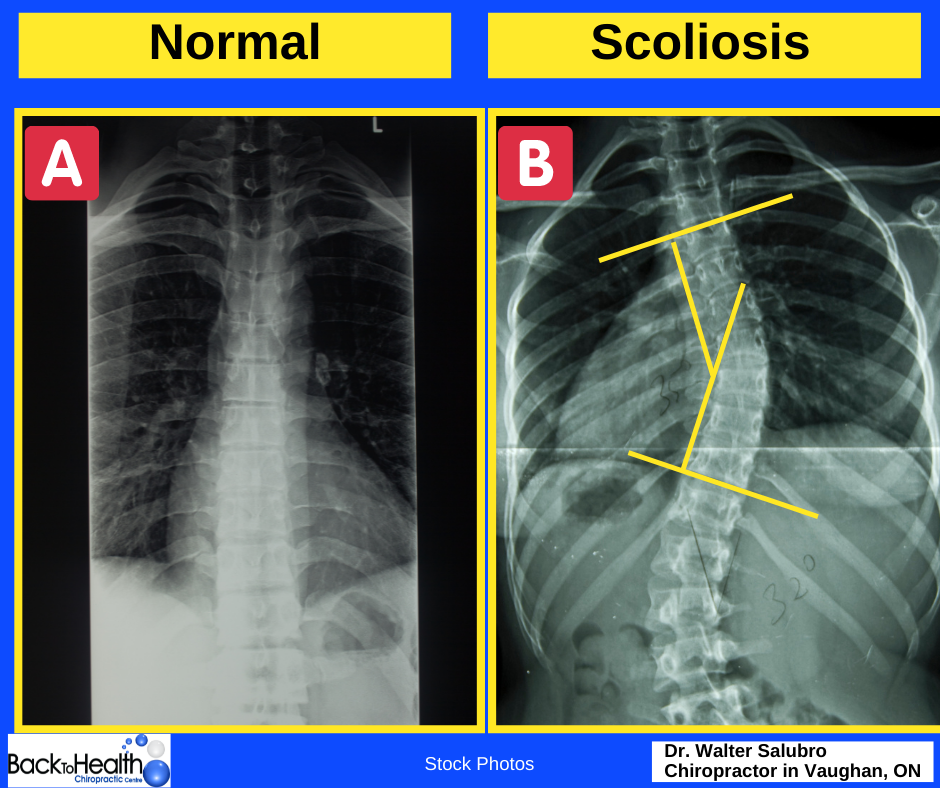When a patient is diagnosed with scoliosis they often hear a lot of new clinical terms related to symptoms, treatment, and one in particular, the ‘Cobb angle’. The ‘Cobb angle’ (or ‘size of the curve’) is an important measurement sign of scoliosis, particularly for adolescents as they move through a growth phase.
However, clinically, many patients, and parents of adolescent and juvenile patients, can become focused solely on the Cobb angle and reducing the curve to a particular ‘number’. It’s important to know that the Cobb angle is a 2D measurement taken from an X-ray, but scoliosis produces 3D structural changes.
Cobb angle is only one part of the picture to ensure patients receive the appropriate treatment for the ‘whole person’ not just the spine. There are many physical, emotional, and psychological considerations when managing scoliosis.
It is important to treat the whole person, not just the spine.
How do physical aspects of scoliosis affect patients’ lives?
When we look at the physical impacts of scoliosis on the person it’s quite clear that these go way beyond Cobb angle. The structural changes caused by scoliosis may affect the way the trunk of the body moves and this can particularly impact sports, posture and daily activities. Here are a few examples:
- The impact of body asymmetry (uneven body) and a changing body shape can be significant for teens that are wanting to head to the beach on the weekend or wear a particular outfit. Furthermore, wearing a scoliosis brace to school can initially be a daunting consideration for some teens and young children.
- The pain that is associated with some cases of scoliosis, more often adults but teens are not excluded, also needs to be addressed.
- The change in biomechanics of the trunk can also be significant for those who play sport. People with scoliosis may find their usual sporting techniques may have to be adapted given the trunk changes. Imagine you are a teen tennis player starting to lose tennis matches because your serve is losing impact and the doctor or other health professional you are seeing does not address the impact of the scoliosis posture on the adolescent’s life. The coach is trying to help to manage the changing serve stroke but can’t work out ‘why’ the teen just can’t produce the right swing anymore. A missed underlying scoliosis or a failure to address biomechanical changes occurring may be the missing piece in the puzzle.
What impacts can there be emotionally?
In many instances, patients can live typical and unaffected lives with their scoliosis. However, this isn’t always the case. Sometimes the patient doesn’t realize that they are being affected mentally and emotionally by their scoliosis.
Perhaps you’re a parent of a teen with scoliosis. Has this teen stopped wearing jeans because they don’t ‘fit’ properly? Are they reluctant to head to the beach because they don’t want people to see the uneven rib cage while wearing a pair of swimmers? As isolated instances, these may not be significant, but over time, and potentially combined with other challenges such as strained friendships at school or difficulties at work, these issues may compound.
The importance of family and friends’ support during the patient journey cannot be underestimated. Making sure there is open dialogue, and that the patient knows they are supported and their challenges are valid goes a long way to helping them on their journey.
Managing potential fear of the patient may also be a concern. Patients may be fearful of the unknown. They may have many questions that they want answered, including:
- Will my scoliosis progress?
- Will I be able to bear children (for women)?
- Will my ribs continue to change shape?
- Will it hurt?
- Will I be able to avoid surgery?
It is important for the person with scoliosis to feel ‘heard’ by their scoliosis health professional. Not all health professionals are trained or have the expertise to treat the scoliosis spine and the impacts of the scoliosis on the individual.
Can conservative scoliosis treatment help the ‘whole person’ not just the spine?
For many patients, conservative treatment for scoliosis in the form of scoliosis specific exercises and 3D custom bracing, such as a ScoliBrace®, can go a long way to ensure that the patient addresses the complexity of changes that occur in scoliosis. Muscle imbalances are addressed. Waist asymmetries can start to improve. Clothes can start to fit better. Tennis serves may even start to progress as the patient learns how to work towards a more neutral, rather than unbalanced, posture.
It is important that scoliosis specific 3D bracing, such as a ScoliBrace®, and scoliosis specific exercises are provided by a scoliosis trained professional. These health professionals can work with the patient, and where applicable, the parents, to treat the whole person, not just the spine. Addressing patient goals and desired outcomes of treatment is imperative to the success of the program.
Spread awareness of scoliosis!
Scoliosis Awareness Month in June is an ideal time to spread awareness of scoliosis in the community. If a family member or loved one is affected by scoliosis it may be timely to reach out to them to see how they are going.
It’s also an opportunity to talk about the importance of regular checks of kids, teens and adults. Knowing the signs and early detection of changes such as a visible curve, uneven shoulders or hips, or a pronounced shoulder hump, means there is better scope for treatment.
If you do notice a change or have any other concerns, please don’t hesitate to call us at (905) 303-1009.
__________________________________
This article is provided courtesy of ScoliCare. www.scolicare.com
Dr. Walter Salubro is a Certified ScoliBrace provider in Vaughan, ON Canada.
Related Scoliosis Articles and Videos:
Scoliosis Defined Scoliosis Treatment Scoliosis Bracing Dr Walter Salubro Interviews Dr Jeb McAviney
Scoliosis Brace Treatment for Adults with Scoliosis
Scoliosis in Adults: How to Identify and Treat It
Will My Child’s Adolescent Idiopathic Scoliosis (AIS) Curve Get Worse?
Part 1 of 10 | What Is Scoliosis? (Dr. Walter Salubro Interviews Dr. Jeb McAviney)
Part 2 of 10 | Scoliosis 3D Deformity Explained | Dr. Walter Salubro Interviews Dr. Jeb McAviney
Part 3 of 10 | When & How To Screen For Scoliosis | Dr. Walter Salubro Interviews Dr. Jeb McAviney
Screening App for Mobile or Desktop
ScoliScreen


